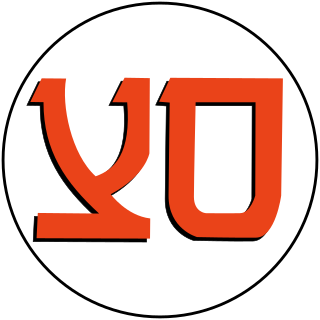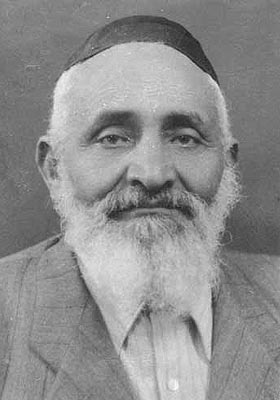
The history of Israel covers an area of the Southern Levant also known as Canaan, Palestine or the Holy Land, which is the geographical location of the modern states of Israel and Palestine. From a prehistory as part of the critical Levantine corridor, which witnessed waves of early humans out of Africa, to the emergence of Natufian culture c. 10th millennium BCE, the region entered the Bronze Age c. 2,000 BCE with the development of Canaanite civilization, before being vassalized by Egypt in the Late Bronze Age. In the Iron Age, the kingdoms of Israel and Judah were established, entities that were central to the origins of the Samaritan and Jewish peoples, as well as the Abrahamic faith tradition. This has given rise to Samaritanism, Judaism, Christianity, Islam, Druzism, Baha'sim, and a variety of other religious movements. Throughout the course of human history, the Land of Israel has come under the sway or control of various polities, and as a result, it has historically hosted a wide variety of ethnic groups.

The Sanhedrin was an assembly of either 23 or 71 elders, appointed to sit as a tribunal in every city in the ancient Land of Israel.

United Torah Judaism, often referred to by its electoral symbol Gimel, is a Haredi, religious conservative political alliance in Israel. The alliance, consisting of Agudat Yisrael and Degel HaTorah, was first formed in 1992, in order to maximize Ashkenazi Haredi representation in the Knesset. Despite the alliance splitting in 2004 over rabbinical differences, the parties reconciled in 2006, in order to prevent vote-wasting. In April 2019, the party achieved its highest number of seats ever, receiving eight seats.

Yishuv, Ha-Yishuv, or Ha-Yishuv Ha-Ivri denote the body of Jewish residents in the Land of Israel prior to the establishment of the State of Israel in 1948. The term came into use in the 1880s, when there were about 25,000 Jews living across the Land of Israel, and continued to be used until 1948, by which time there were some 630,000 Jews there. The term is still in use to denote the pre-1948 Jewish residents in the Land of Israel.
Several politico-constitutional arrangements use reserved political positions, especially when endeavoring to ensure the rights of women, minorities or other segments of society, or preserving a political balance of power. These arrangements can distort the democratic principle of one person - one vote in order to address special circumstances.
Ashkenazi Hebrew is the pronunciation system for Biblical and Mishnaic Hebrew favored for Jewish liturgical use and Torah study by Ashkenazi Jewish practice.

Agudat Yisrael is a Haredi Jewish political party in Israel. It began as a political party representing Haredi Jews in Poland, originating in the Agudath Israel movement in Upper Silesia. It later became the party of many Haredim in Israel. It was the umbrella party for many, though not all, Haredi Jews in Israel until the 1980s, as it had been during the British Mandate of Palestine.

Ben-Zion Meir Hai Uziel, sometimes rendered as Ouziel, was the Sephardi chief rabbi of Mandatory Palestine from 1939 to 1948, and of Israel from 1948 until his death in 1953.

Sephardim and Oriental Communities was a political party in Israel and is one of the ancestors of the Likud party.

Elyashiv is a moshav in central Israel. Located in the Sharon plain, it falls under the jurisdiction of Hefer Valley Regional Council. In 2021 it had a population of 716.

Yisrael Yeshayahu Sharabi was an Israeli politician, minister and the fifth Speaker of the Knesset.

The Assembly of Representatives was the elected parliamentary assembly of the Jewish community in Mandatory Palestine. It was established on 19 April 1920, and functioned until 13 February 1949, the day before the first Knesset, elected on 25 January, was sworn in. The Assembly met once a year to elect the executive body, the Jewish National Council, which was responsible for education, local government, welfare, security and defense. It also voted on the budgets proposed by the Jewish National Council and the Rabbinical Council.

Avraham Taviv was an Israeli politician.

Ya'akov Nitzani was an Israeli politician who served as a member of the Knesset for Mapai from 1952 until 1959.
The first elections to the Assembly of Representatives in Mandatory Palestine were held amongst members of the Jewish community on 19 April 1920, except in Jerusalem where voting took place on 3 May. Ahdut HaAvoda led by David Ben-Gurion emerged as the largest party, winning 70 of the 314 seats.

Ahdut HaAvoda was the name used by a series of political parties. Ahdut HaAvoda in its first incarnation was led by David Ben-Gurion. It was first established during the period of British Mandate and later became part of the Israeli political establishment. It was one of the forerunners of the modern-day Israeli Labor Party.
Elections to the Assembly of Representatives of Mandatory Palestine were held on 2 August 1944. Just over 200,000 Jewish residents voted, more than 70% of all those eligible to vote. This compared with just over 50,000 who voted at the previous elections in 1931. The difference reflected the high level of Jewish immigration to Palestine in the 1930s and 1940s.
Ashkenazi Jews in Israel refers to immigrants and descendants of Ashkenazi Jews, who now reside within the state of Israel, in the modern sense also referring to Israeli Jewish adherents of the Ashkenazi Jewish tradition. They number 2.8 million and constitute one of the largest Jewish ethnic divisions in Israel, in line with Mizrahi Jews and Sephardi Jews.

Municipal elections took place in Israel for the first time on 14 November 1950. These elections were conducted in a matter similar to legislative elections, and turnout stood at approximately 80%. Due to pressure from the ruling party, Mapai, the voting age was lowered from 21 to 18. Mapai ran under the name 'the Histadrut list', which received criticism from Mapam. All religious parties ran as part of the United Religious Front. The General Zionists made significant gains when compared to their legislative power.















